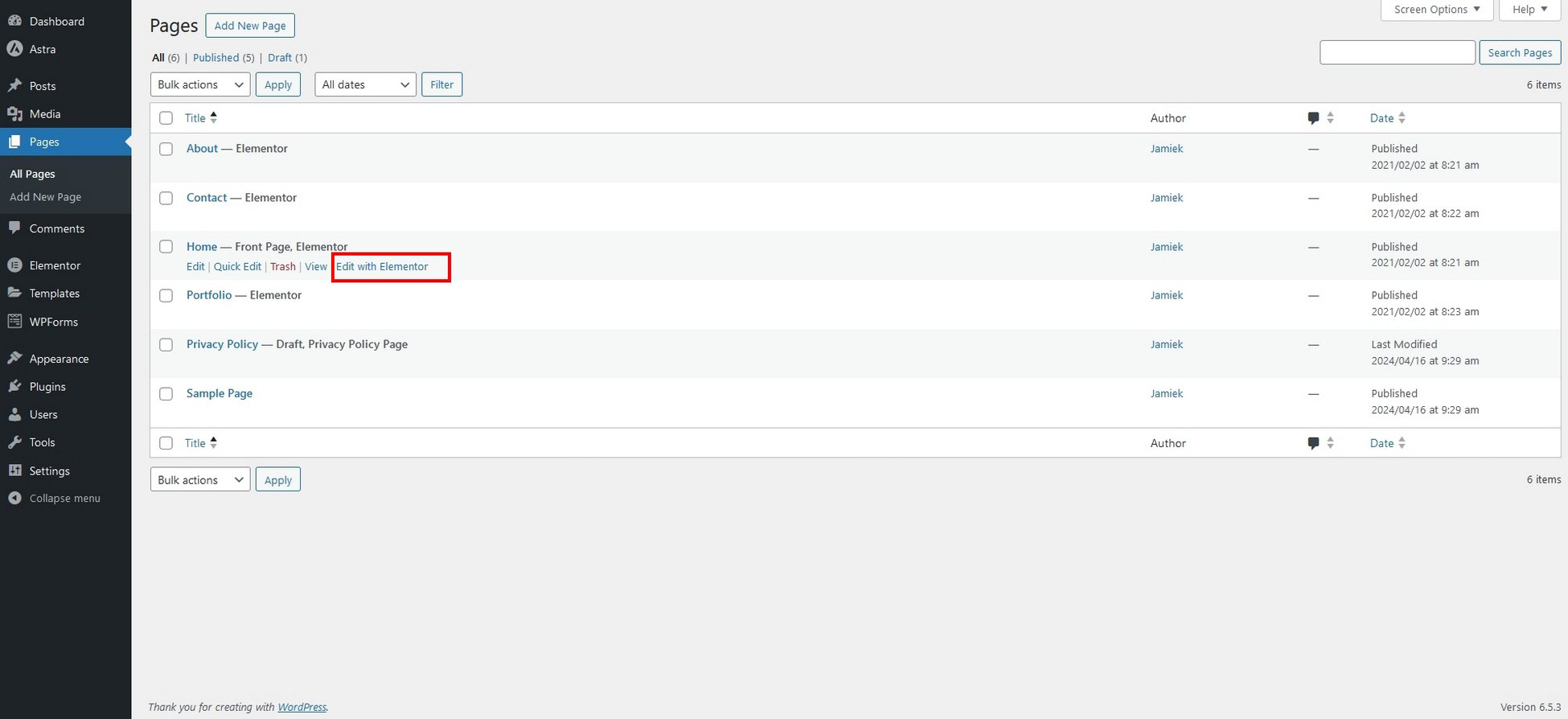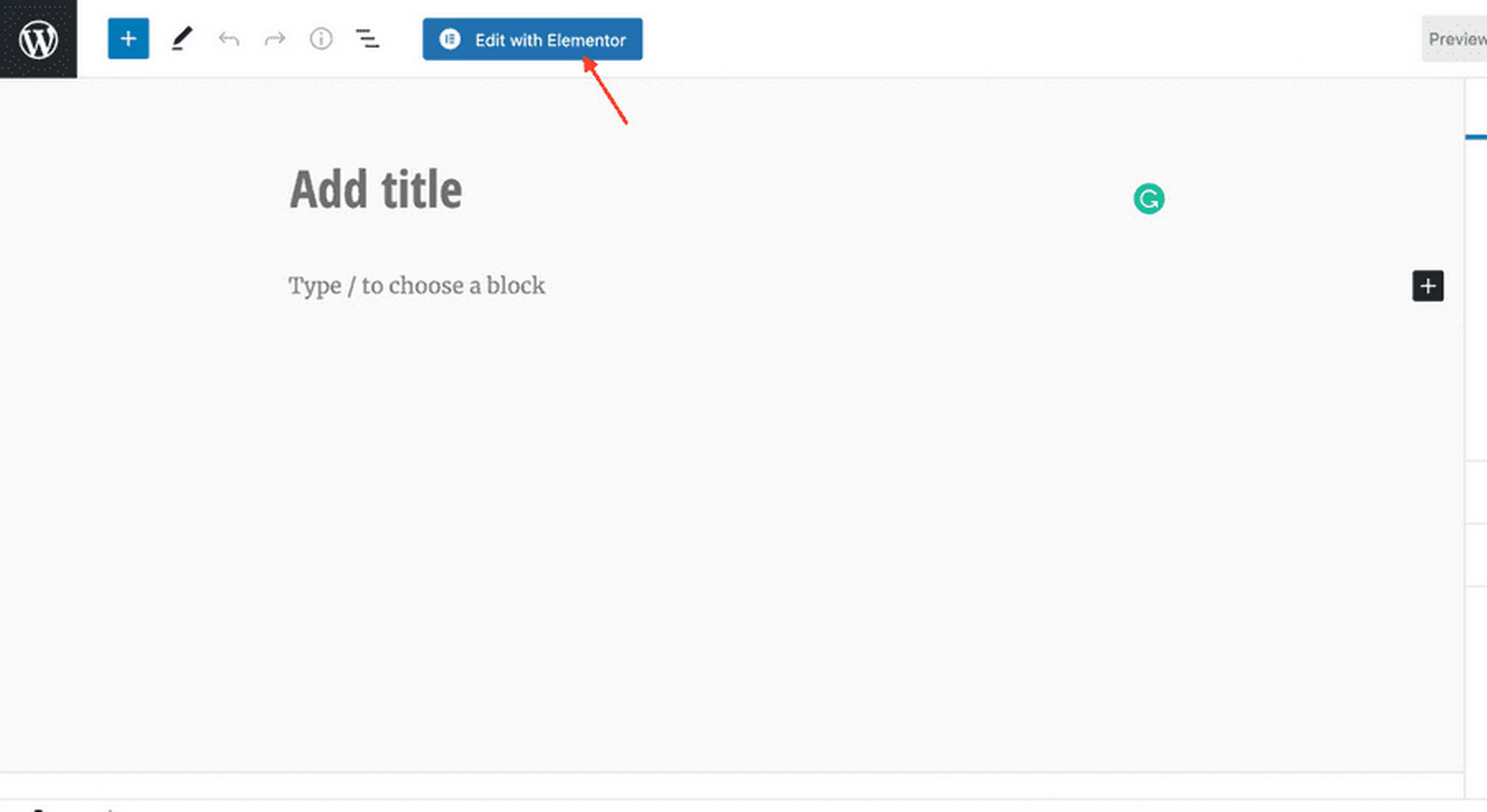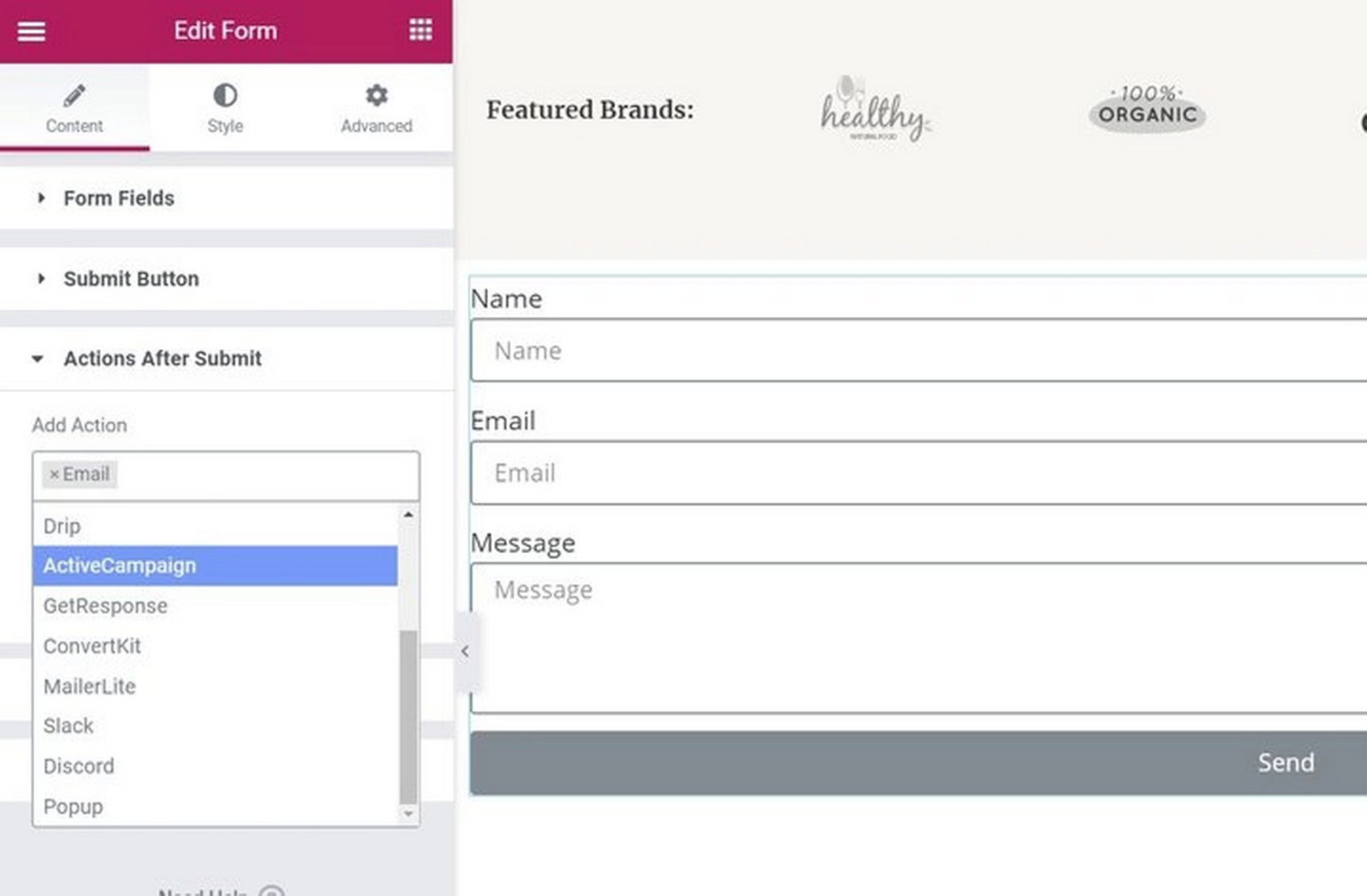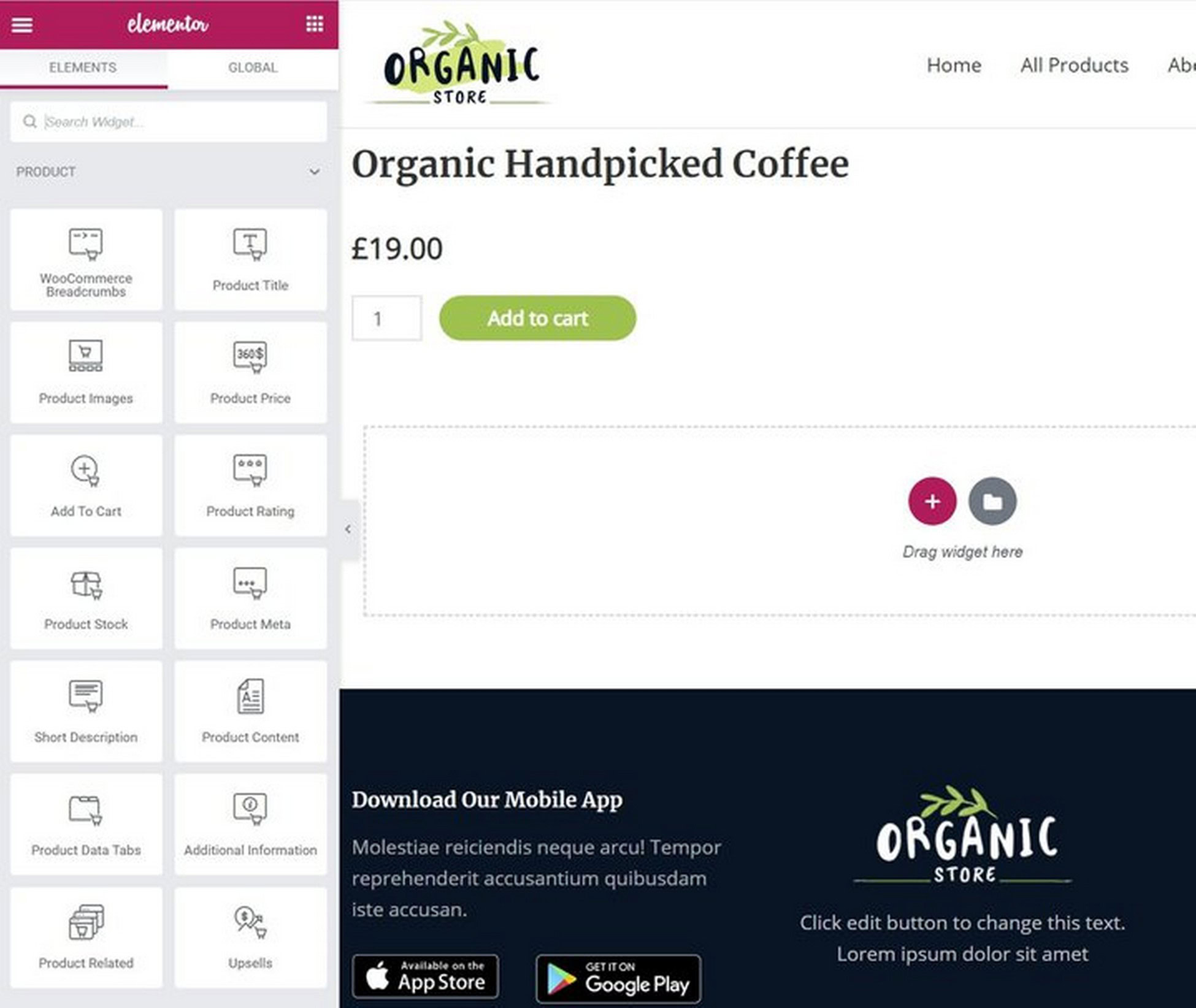Want to try your hand at building a website? Trying to decide if Elementor is the right website builder for your needs?
- Elementor Review Summary
- What Is Elementor?
- Who Is Elementor For?
- Elementor Pros and Cons
- Elementor vs. The Competition
- Elementor Pricing
- How Elementor Works
- 10 Features That Help Elementor Stand Out
- Elementor Free vs Pro
- Does Elementor Slow Down Your Website?
- 5 Elementor Alternatives
- Is Elementor Still the Best Website Builder?
- Elementor FAQs
We have been working with WordPress for over a decade and have built our entire business around it. The default editor is better than ever, but still falls short in many areas.
That’s why we like Elementor so much.
Elementor has been part of that journey and we know it very well. We have worked with it, built dozens of templates for it and even created a plugin to extend it.
We think we know more than enough to write a hands-on Elementor review!
Our in-depth Elementor review will help you understand:
- What Elementor is and how it works
- How it helps build websites
- 10 features that help it stand out from the competition
- Whether you should use Elementor or one of the many alternatives
By the end, you should have everything you need to make an informed decision about whether or not Elementor is the website builder for you.
Elementor Review Summary
Elementor is popular for a reason. It has lots of options, makes building pages easy and enables anyone, with any level of experience to build great-looking websites.
It does have significant downsides though.
Elementor pros and cons at a glance:
| Elementor Pros | Elementor Cons |
|---|---|
| ✅ Easy to use with straightforward menus | ❌ Still significantly slows down page load times and adds HTTP requests |
| ✅ There’s a decent free version | ❌ The interface can be complex at times |
| ✅ Drag and drop editor so you don’t need to know code | ❌ Frequent fixes and security updates required |
| ✅ Plenty of themes and plugins | ❌ Elementor Cloud is quite expensive |
| ✅ Continually developed and improved | ❌ All the good stuff is premium-only |
| ✅ Elementor AI adds a new dimension |
Price: Free/From $49 to $399 per year
We’ll cover all this information in more depth in the review.
What Is Elementor?

If you’re reading this, you probably already know that Elementor is a visual drag and drop website builder for WordPress.
In case you don’t, Elementor enables you to:
- Build a complete website without touching a line of code.
- Drag and drop content and feature blocks to create the perfect design.
- Preview a page to see what it will look like as you’re building it.
Elementor is used by millions of WordPress websites, making it the most popular WordPress page builder around.
It’s not the only WordPress page builder that offers a visual, drag and drop interface though.
So what makes Elementor stand out and why is it so successful?
Standout features include:
- Lots of content elements — Plenty of blocks, or ‘elements’, which you drag and drop to create your design.
- Elementor AI – Recently introduced AI tools help create content, images and code.
- Responsive design — Everything is responsive. Lots of options to control how pages look on different screen sizes.
- Theme Builder — Design a WordPress theme using Elementor Pro (we still recommend pairing it with a quality theme).
- Templates — Hundreds of professionally designed templates, including Astra templates made specifically for Elementor.
- Loop Builder — Design content loops using the Elementor Pro’s visual drag and drop interface.
- Style options — Detailed style options to make your design pixel-perfect without resorting to custom CSS
- WooCommerce Builder — Design your WooCommerce store using Elementor.
- Convenience — Useful tools like right-click support, a quick find tool, and more to help you build great-looking pages faster.
- Dynamic content — Include dynamic content from custom fields and plugins like ACF, Pods, and Toolset.
Those are just some of the key points that make Elementor so popular. There’s a lot more to it than that though, as we’ll discuss shortly.
Who Is Elementor For?

Elementor is for anyone who uses WordPress.
It’s not the only option to build websites using drag and drop, but it’s one of the easier options.
The Casual User
If you’re a casual user looking to add style to posts or build an engaging homepage, Elementor is great.
While there’s a lot to learn, it’s all easy to find and intuitive to use. You’ll be building pages or adding features in no time.
Plus, with the sheer number of high quality Elementor templates around, your job is made even easier!
The Digital Marketer
Elementor is useful for digital marketers because it includes tons of promotional elements.
For example, the Form widget in Elementor Pro lets you create all types of lead forms and connect them to popular email marketing services.
You can use the Popup Builder to create opt-in popups and place them anywhere on your site.
Elementor also works with our readymade landing page templates to make marketing even easier!
Agencies or Freelance Designers
If you build websites for clients, Elementor Pro is a popular choice.
You can combine Elementor with a flexible theme like Astra to build custom sites quickly and at scale.
You can use the Elementor Theme Builder and AI to help design templates for custom post types and incorporate dynamic data from ACF, Pods, or Toolset.
Elementor Pros and Cons
We covered the pros and cons of Elementor in the summary above, but let’s discuss them in a little more depth here.
Here’s what you need to know about Elementor:
Elementor Pros
- Ease of use – Elementor may look complicated at first, but it’s easy to use once you know how it works and where to find everything.
- Free version – The free version has many of the core features you’ll need to build websites.
- No code solution – Drag and drop opens up web development to everyone.
- Lots of themes and plugins – There are plenty of addons to take Elementor further and do more with it.
- Continually being developed – Even though it has been around for a long time, Elementor is still being developed and improved.
- Elementor AI – AI is everywhere right now but Elementor’s version is one of the better ones to use.
Elementor Cons
- Performance impact – Elementor does add HTTP requests and slow down pages. Less now than before, but there’s still a speed penalty.
- Interface can be complicated – There’s a lot to learn when you first start using it and a lot of controls to get to grips with.
- Frequent fixes required – Elementor is a large, complicated website builder and requires frequent fixes and security updates.
- Hosting is expensive compared to Cloudways – We’ll discuss Elementor Cloud in a little while, but it doesn’t compare very favorably with standard web hosting.
- Lots of features are premium only – You get a lot for free, but as usual, all the really good stuff needs to be paid for.
As you can see, Elementor is a mix of great things and some not-so great things. It has a lot to recommend it but you need to be aware there are downsides.
Come to terms with those and you’ll probably have a great time using it!
If you’re looking for a better mix of features and performance, the Spectra website builder might be a better option.
Elementor vs. The Competition
Elementor doesn’t operate in a vacuum, there’s a market full of competing page builders all vying for your custom.
So how does it compare?
We cover the 5 main alternatives further down the page, but here’s a quick comparison between Elementor, Divi and Spectra:
| Elementor | Divi | Spectra | |
|---|---|---|---|
| Blocks/widgets | 82 (Pro) | 48 | 28+ |
| Templates | 300+ | 2,000+ | 100+ |
| Block patterns | None | None | 100+ |
| Ease of use | Moderate | Moderate | Easy |
| Unique features | – Popup Builder – Addons for everything | – Role editor – A/B testing tool – Support for conditional logic | – Native WordPress interface – Flexbox containers – Block presets – React framework – Wireframing tool |
| AI features? | Yes | Yes | Yes |
| Performance impact | HIgh | Low/Medium | Low |
| Price | From $59 per year | From $89 per year | From $49 per year |
| Free version? | Yes | No | Yes |
Read Divi vs Elementor: Neck-To-Neck Comparison Made Easy in 2025 for a LOT more detail on how these two compare (along with Spectra).
Elementor Pricing
The base version of Elementor is completely free to use. There’s also a Pro version with a lot more flexibility and a lot more features.
For clarity, Elementor Pro includes all four premium plans.
As there’s very little difference between them aside from the number of site licenses, it makes sense to use a collective term.

We compare Elementor vs. Elementor Pro in depth if you want to get into detail about the differences.
We’ll cover them briefly here too though..
Elementor is a feature-packed plugin that works for all types of websites. However, the base version only delivers the bare minimum you need to design and customize a site.
If you want to redesign an entire site or build multiple sites, Elementor Pro is the best choice.
For example, with Elementor Pro you can customize your header, footer, posts page, single posts page, or product pages.
You can also add popups, use AI to generate content, images and code, add contact forms, global widgets, content loops and custom CSS.
You also get priority support.
Here’s what you get with Elementor Pro:
- Additional widgets
- 300+ premium demos including header, footer, and popups
- AI tools to help generate content, images and code
- Theme Builder that lets you change the header, footer, and posts pages
- WooCommerce Builder for editing product and category pages on eCommerce websites
- Popup Builder with advanced features like, exit intent, after scroll, and controls to display certain pop-ups on certain pages
- Visual Form Builder that can be integrated with popular email marketing tools
- Global widgets to use site-wide
- Support for dynamic content and content loops
As you can see, you do get a lot for your money if you go pro!
Elementor Pro Pricing
Elementor Pro has 4 pricing plans based on the number of licenses you need.
The Essential plan includes all the basics you need to create a single site. You don’t get access to all widgets, but you do get 50 to play with.
The main differences between the three higher tier plans are the number of sites you can use it on.
| Essential | Advanced | Expert | Agency |
|---|---|---|---|
| 1 site | 3 sites | 25 sites | 1000 sites |
| 50 Pro widgets | 82 Pro widgets | 82 Pro widgets | 82 Pro widgets |
| – | Popup builder | Popup builder | Popup builder |
| – | eCommerce support | eCommerce support | eCommerce support |
| $49/year | $99/year | $199/year | $399/year |
If you’re working on a single website, the Essential Plan would probably be your best option.
If you’re a freelancer or agency working on multiple websites, the higher tier plans might be more suitable.
If you want to use Elementor AI, don’t forget you’ll need to pay an extra $3.99 or $8.25 per month for AI credits.
Having to pay extra for AI isn’t universally popular as many social media posts illustrate.

To be fair to Elementor, most AI tools use credits as it seems the fairest way to keep the tool both affordable and sustainable.
How Elementor Works
Now let’s get to the good stuff, getting hands on with Elementor.
Just like any other plugin, you have to install and activate Elementor through the WordPress repository.

You can build pages from scratch or edit existing pages with Elementor.
We have already installed the Astra theme and a website template built with Elementor. We recommend doing the same so you can follow along.
Select Pages > All Pages and select a page to edit.
Click the Edit With Elementor link underneath a page to start editing.

Alternatively, open a page and select the blue Edit with Elementor button at the top.

Here’s what the Elementor dashboard looks like.

Here’s what you can see in the image:
- The working area or the main canvas where you edit and design
- Elementor widgets area
- Elementor settings
- Open Elementor widgets
- Global settings
- Revision history
- Switch view (desktop, tablet, mobile)
- Preview changes
- Publish
To edit an element, select the one you want to change and select the pink box with the pencil icon at the top right.

You’ll see the menu on the left change. This is where you make your edits, modify color, text, size or whatever you need.
The left menu is dynamic so will change to reflect the type of element you selected. It’s a clever system that makes it quick and easy to edit web pages.
When you have completed your edits, select the green Update button at the bottom of the left menu to save your changes.
It really is that easy!
If you’re using the latest version of Elementor Pro you’ll see new Write with AI links within text boxes and an Elementor AI icon within the image window to help you create AI images.
Elementor Layouts
If you’re new to building websites, it will help to understand the structure of the Elementor page builder.
Every web page is essentially a grid that contains sections and columns.
- Section. A section is a row. You can add a background, change its size, and more. Columns and widgets go inside sections.
- Column. A column divides a section into horizontal columns. You can then control each column individually.
A page can have any number of sections. Sections contain columns, which is where you place your widgets.
Here is an illustration showing what the structure looks like:
How To Design a Page From Scratch
If you want to experiment with building a web page from scratch, it’s easy. You can either start with a blank screen or import a pre-existing template.
We’ll create a new page to illustrate how it works.
Here’s how:
Step 1: Create a new page and select Edit With Elementor.

Step 2: Click on the + button to add a new section.

Step 3: Pick a page layout from the options on the screen.

Step 4: Drag a widget from the Elementor panel into a column.

Once you’re happy with placement, adjust it using the Content, Style, and Advanced tabs in the left menu.
The Advanced tab is also where you’ll find the new display conditions control. Use it to manage exactly how and when a post, page or page element is displayed.
You can choose from a range of display conditions, including author, publish date, logged in status, role and many others.
Experiment with the options until you’re completely happy. Just remember to save your work before you leave the page!
How To Customize an Existing Page With Elementor
Sometimes you might need to edit an existing page with Elementor so that’s what we’ll cover next.
The process is not very different from what we have done already. In fact, it’s actually easier to edit an existing page than start from scratch.
Here’s how:
To add a new widget, drag it from the sidebar on the left.
To rearrange a widget on the visual preview, drag and drop it.
If you want to edit text, just click and type in the left menu as you did before. If you want to create text with AI, select the Write with AI link at the bottom of the text box.

To create new areas for widgets, use sections and columns.
To customize a widget, click on it.
That will open the widget’s settings in the sidebar. You’ll see the Content, Style and Advanced tabs as discussed before.

Use a similar approach to customize sections and columns.
As you change an element’s settings, you’ll instantly see those changes reflected in the visual preview.
Select Update at the bottom of the left menu once you’re done to save your changes.
10 Features That Help Elementor Stand Out
Next, let’s discuss some of the features that help Elementor stand out from other drag and drop page builders.
Free Version
While limited, the free version of Elementor is a definite benefit.
You can try before you buy, experiment with features, learn how everything works and see if it’s for you or not before you part with any money.
The free version contains many core elements and lets you build basic pages and edit them however you like.
Convenient Editing Features for Faster Design
Elementor comes with some convenient editing features that help you build pages quickly.
For example, it comes with right-click support, which most other page builders don’t offer. You can right-click on any element to duplicate it, copy and paste styles, and more.

It also comes with a useful Navigator view that gives you an ordered list of all the content on the page, arranged by sections and columns.
You can use the navigator to quickly open the settings for any element on your page and check the hierarchy.
You can also rename elements to make them easier to find.

There’s also a Finder tool that lets you jump to anything that you’ve built by searching for it.

Huge Widget Selection for Design Flexibility
The website builder has a huge selection of widgets, offering a ton of flexibility for building pages.
It’s not just about the widgets that come with Elementor and Elementor Pro. There’s also a huge selection of widgets from third-party developers.

For example, Ultimate Addons for Elementor adds another 36 new widgets that you can use in your designs.
With so many options, you can almost always find a widget that does exactly what you want.
Elementor Cloud Hosting
Elementor Cloud adds hosting to the mix, powered by Google Cloud.

The company has branched out into hosting and offers cloud hosting, managed WordPress hosting and headless hosting.
Plans cost from $11.99 per month for the Lite package, all the way up to $32.99 per month for the Grow package.
This was a logical expansion for the company as it enables Elementor to help you build, customize, deploy and now host your website.
Prices are okay. It’s certainly not the cheapest option but pricing isn’t outrageous.
The allowances are a little meager though.
For example, the Lite package only gives you 5GB of storage, 10GB per month of bandwidth for 10k monthly visits.
Other hosts offer much better value in our opinion.
Elementor AI
Elementor AI offers a suite of tools that includes a content creator, image generation, layout creator and a code generator.

Each adds an AI component to everyday tasks. You can use it to help you out, speed up your work or perform tasks you don’t know how to do.
It’s no ZipWP, but it’s great to see AI being used to help people build websites!
Elementor AI costs an extra $3.99 or $8.25 per month depending on how many credits you need.
Detailed Style and Positioning Rules
Another area where Elementor stands out is with design options.
Elementor lets you do all the basics — you can switch up colors, fonts, spacing and create great layouts.
It also adds advanced options like:
- Shape dividers
- Custom positioning
- Animations, including parallax scrolling, mouse tracking, 3D tilt, and more
- Custom CSS for individual widgets

The new nested elements feature adds another dimension to positioning.
Introduced in Elementor 3.10, nested elements utilize flexbox containers to allow the placement of elements within other elements.
Huge Template Selection
If you don’t want to build your site from scratch, Elementor comes with a huge selection of templates, divided into two categories:
- Pages — Full-page templates. Install and customize to meet your needs.
- Blocks — Template parts for specific parts of a page, like FAQs or contact forms. You can mix and match them like Legos to build complete designs.

As with widgets, you can find lots of quality templates from third-party sources.
If you use the Astra WordPress theme, it comes with lots of pre-made starter templates built with Elementor.
We are biased of course, but we think our templates are much more flexible and of a higher quality than Elementor’s!
Flexible Form Widget
We mentioned Elementor’s widget selection a moment ago but it’s worth singling out a specific widget:
The Form widget.

It lets you create custom forms, complete with as many fields as needed. Where this widget becomes really useful is with its built-in integrations.
You can hook it up to popular email marketing services like ActiveCampaign, GetResponse, Mailchimp, and more.
There’s also a Webhook option that lets you connect to Zapier, OttoKit, Slack, Discord and other apps.
Theme Builder With Dynamic Content Support
With Elementor Pro’s Theme Builder, you can create:
- Headers, including mega menus
- Footers
- Single templates
- Archive templates
- Content loops
- Mega menus

For example, you could create a custom post type and then use Elementor to design the template for that post type.
The really powerful thing here is that you have the ability to bring in dynamic content from custom fields.
This lets you build truly custom sites and harness the power of WordPress as a flexible content management system.
The Astra WordPress theme also allows you to customize the header, footer and site templates.
Another cool aspect of the Theme Builder is the new Loop Builder. It enables you to create dynamic content loops that keep content revolving for extra engagement.
It’s still in its infancy, but is looking pretty good!
The Theme Builder is also where you’ll find mega menu tools.
These were introduced in a recent update and enables you to create mega menus without third-party plugins.
WooCommerce Builder for Custom eCommerce Designs
The WooCommerce Builder uses the same principles, but has extra features for eCommerce stores.
It adds extra elements such as product breadcrumbs, stock checkers, add to cart elements, cart, checkout and more.

Pair with an Elementor theme and you could use the techniques you’re now familiar with to create an online store as well as a website!
Read this to learn how to create an eCommerce website with Elementor.
Elementor Free vs Pro
Is the free version enough or do you need to purchase Elementor Pro?
This is an important decision, which is why we wrote an entire post on how to choose between Elementor Free vs Pro.
In general, if you just want to design some basic posts or pages or create landing pages, you can probably get by with the free version.
If you don’t mind the constant nags to upgrade that appear EVERYWHERE!

We fully appreciate that the purpose of a free product is to promote a premium one, but Elementor goes a little too far!
If you want to add more advanced elements or use Elementor for your online store, you’ll need Pro.

Pro adds:
- New widgets – Some excellent widgets for building all types of pages.
- Theme Builder with AI – Lets you design your entire theme and WooCommerce store using Elementor.
- Popup and Form Builders – Build popups and forms using drag and drop.
- More templates – While the free version includes some templates, you need Pro for full access.
- More design options – For example, you get access to custom positioning.
- eCommerce features The WooCommerce Builder is Pro only.
- Loop Builder – New content loop feature.
Purchasing Elementor Pro is not the only way to extend Elementor.
You could also use a flexible theme like Astra combined with Ultimate Addons for Elementor, which adds 50+ new Elementor widgets.

As Astra is built to pair with Elementor, you can still use the website builder to customize your site so it’s truly unique.
Does Elementor Slow Down Your Website?
One question seems to dominate any discussion on website builders, especially this one.
Does Elementor slow down your website?
Let’s find out.
Here are the templates we used to test it:.
- Site editor website from Starter Templates
- Elementor website from Starter Templates
We hosted both sites on the same server and under different directories of the same domain name and compared their performance in GT Metrix.
Here are the results.

As you can see, the performance of the site editor version is much faster than Elementor.
In terms of exact load times, the site made with Elementor took about 5.5s to load while the other took just 2.2s.

If you are optimizing for SEO or use experience, you know how big of a difference that is!

The same website built with Beaver Builder also performs slightly better than Elementor.
So the answer is yes, Elementor does slow down your website.
You don’t need to take our word for it, here’s how many Reddit posts discuss speed:

These comments in the Elementor Expert Community have the same complaint:

To be fair, the Elementor team has introduced a raft of performance improvements over recent updates, but speed is still an issue.
Not something you get with the Spectra website builder as it’s designed for speed as much as power!
5 Elementor Alternatives
Although Elementor is a great website builder, it’s not the only one out there.
We know of 5 great Elementor alternatives worth checking out.
Spectra

Spectra is our own website builder, designed to overcome the performance impact of Elementor.
The main difference between Spectra and Elementor is that Spectra works within the WordPress site editor, so there’s very little extra code to load.
That drastically improves performance while offering the blocks, patterns, wireframes and building tools you need to create amazing websites.
It also means there’s nothing new to learn and very little learning curve. Another two downsides of Elementor.
Spectra adds extra page building blocks, typography and color options and flexbox container support.
There are also tools to help create presets, design themes and copy and paste styles across an entire website.
It’s a very capable website builder and is fully compatible with full site editing, the future direction of WordPress!
Price: The core Spectra website builder is free, premium versions start at $39 per year.
WordPress Site Editor

The site editor, formerly Gutenberg, is lightweight and fast because it’s part of WordPress.
The blocks and building tools are basic but cover all the essentials you’ll need. They are also easy to use and work seamlessly with the tools you’re already familiar with.
In terms of performance, the site editor works better than Elementor. It is optimized for WordPress and delivers what it promises.
However, it also lacks the different design elements that Elementor brings to the table.
If you are someone who prefers performance over design, the site editor is the right choice for you.
Price: The WordPress site editor is completely free to use.
Divi

Divi is both a WordPress theme and a page builder. It works completely differently to Elementor, which works for it and against it.
It works for it as the methodology is very simple and uses a layered approach to add sections, columns, rows and blocks.
There’s also a dynamic menu within each block to access settings and make your changes.
It works against it as Divi will feel a little odd if you have worked with other page builders for a while. You’ll soon get used to it though.
The way Divi handles templates and template parts can be a little tricky, but again, once you get used to it, you’ll be fine.
Divi Pro adds AI tools to help create content, images and code and is very simple to use. It’s changing the way people work with Divi, so watch that space.
Price: Divi costs $89 per year for unlimited sites.
Beaver Builder

Beaver Builder is not as flashy or feature-rich as Elementor. Check our Elementor vs Beaver Builder comparison for more on that.
It does provide a stable and consistent experience with its core plugin to build pages. There’s a Beaver Builder theme available if you want one too.
It’s a complete page design package that provides all the tools and components to build any kind of site.
It has headings, buttons, maps, sliders, contact forms, testimonials, and more all in one place.
It stands head to head with Elementor in terms of design and performance. However, Beaver Builder doesn’t have as many addons.
Price: Beaver Builder starts at $99 for unlimited sites.
SeedProd

SeedProd is a premium drag and drop website builder plugin for WordPress. It is designed to be as fast, easy to use with website speed at the forefront.
SeedProd’s smart design system makes reusing blocks of content quick and simple by defining color schemes which will save time when designing new layouts.
It has all the blocks and features you’d expect from a powerful page builder such as opt-in forms, social profiles, countdown timers.
It includes contact pages with an option to easily redirect visitors on any site map or Google Maps listing for business location.
You can also use SeedProd’s custom domain mapping feature. Itl saves time when managing multiple landing pages while maintaining continuity across platforms.
Price: Starts from $39.50 per year for a single site license.
Is Elementor Still the Best Website Builder?
We believe that Elementor is one of the best WordPress page builders out there but not the best.
We naturally believe our own Spectra website builder is the best, but we may be biased 🤩
We do think Elementor is great though, which is why we keep designing themes for Elementor and keep Ultimate Addons for Elementor fully updated.
Elementor is:
- Easy to use and to build with
- Flexible enough for most types of website
- Extendable with themes and addons
- Stable and reliable
We think for all those reasons and more, it’s well worth checking out if you’re looking for a website builder.
We’re not alone in our positive view of Elementor. Over four million WordPress sites use Elementor so they must be doing something right!
Check out some of the best Elementor templates on the web!
Is there anything we missed in our Elementor review that would help you make your decision? Leave a comment and we’ll try to help you decide.
Elementor FAQs
What is the disadvantage of using Elementor?
The disadvantage of using Elementor is that it’s a big plugin. There’s a lot of extra code to load, impacting performance. There’s also a new way of working to learn, new menus and settings to master and extra money to pay each year if you use Elementor Pro. It isn’t all bad though, we also think it’s a very good website builder!
Is Elementor worth using?
Yes, Elementor is worth using if you prefer using drag and drop for page building. It’s an extra layer of complexity over the WordPress site editor and does have a performance impact, but it’s also a very powerful way to build websites.
Is there something better than Elementor?
Yes, there are better website builders than Elementor, it all depends what you’re looking for. The Spectra website builder is faster and easier to use, Beaver Builder is more intuitive, Divi is a completely different way of working and the WordPress site editor uses methodology you probably already know.
Is Elementor good or bad for SEO?
Elementor is SEO-friendly in terms of structure and hierarchy but the performance penalty offsets a lot of that. You certainly wouldn’t use it because of SEO though. To be fair to Elementor, all page builders except Spectra come with a performance penalty so it isn’t an exclusively Elementor problem.
Does using Elementor slow down your site?
Yes, Elementor does slow down your site. The company has made big gains in performance with recent updates but there is still a lot of extra code to load, which slows down page load times.

Sujay Pawar is the co-founder and CEO of Brainstorm Force. He brings a one-of-a-kind fusion of tech brilliance, business savvy and marketing mojo to the table. Sujay has consistently spearheaded the development of innovative products like Astra, CartFlows, ZipWP and many others that have become market leaders in their respective niches.
Disclosure: This blog may contain affiliate links. If you make a purchase through one of these links, we may receive a small commission. Read disclosure. Rest assured that we only recommend products that we have personally used and believe will add value to our readers. Thanks for your support!













Looks interesting but IMHO page builders should take a back seat to Gutenberg. Hopefully Astra Pro will focus on the future of Wordpress as an open source project and Gutenberg in particular.
Hello,
Well I personally may agree to this as Gutenberg is rising well.
However, its been the page builders that have been making things quite easier and it is a matter of fact that it will definitely take some time to reach where page builders are right now.
About Astra’s inclination towards page builders and not Gutenberg – well, that’s not true! 🙂
Our first and ultimate aim is to help all WordPress users make the most of the resources they receive for free!
The reason we talk about Elementor and other page builders is because we see people interested in knowing more about it.
But, if you see, we love Gutenberg and Astra was among the first few themes that was 100% Gutenberg ready even before WordPress 5.0 was officially released.
Furthermore, we also came up with an addon called Spectra to promote the WordPress editor and encourage users to use it more.
We aren’t certainly biased and working in every little way we can contribute towards the community. 🙂
I agree with you, Gutenberg Blocks editor will gain more supports in future, It is easier for me to build a WordPress website than before
To be honest i a elementor user anyway but this article feels not convincing for me.
In my opinion kill feature is free starter elementor (as astra, for sure) and lightning frontend thats it)
Divi’s right click better but there no community feeling.
Thanks for sharing your opinion, Alex!
Could you please explain why didn’t you find this article convincing? And glad to hear that you like the free Elementor Templates.
While, we personally feel, there are a lot of things Elementor has provided recently and combined it with Astra and you have endless possibilities. 🙂
Thank you for sharing your thoughts about Elementor, Jim!